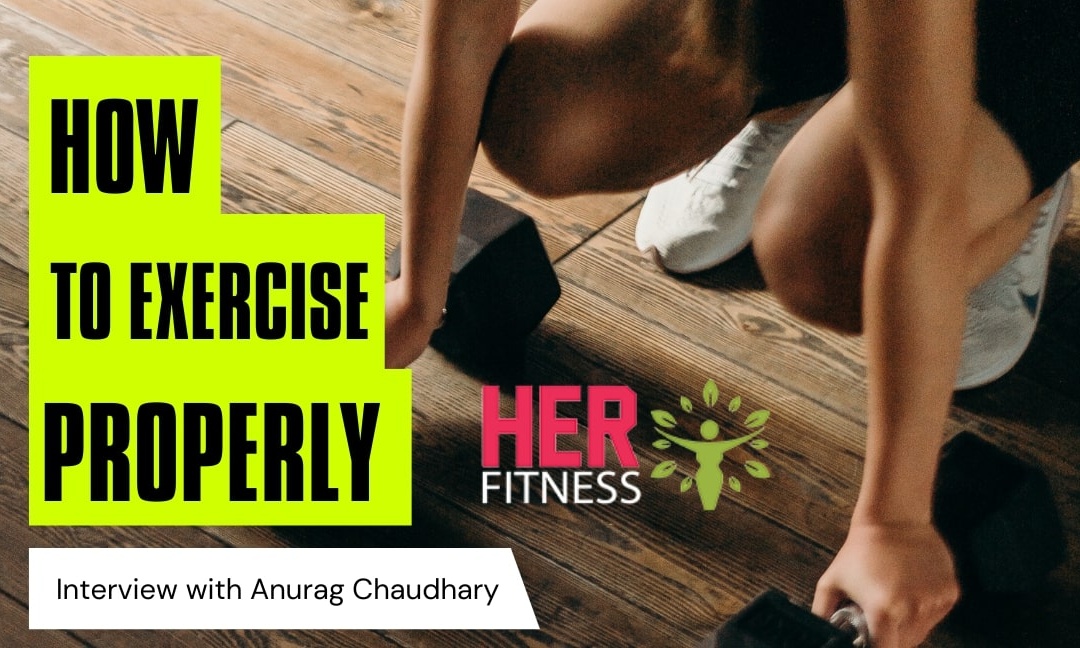Lose weight and build muscle without looking like a powerhouse – that’s the best way to do it. About the advantages and disadvantages of endurance and weight training for women. And: does strength training help with cellulite?
Endurance training or weight lifting – what is better for a woman to lose weight? What should she watch out for when doing dumbbell training? Sports medicine specialist Anurag Chaudhary from the information column of Her Fitness Blog gives answers and explains the different types.
Her Fitness Correspondent: Some women avoid dumbbells because they don’t want to look like a bodybuilder. Is the fear justified?
Anurag Chaudhary: No, absolutely not. Women don’t build muscle nearly as quickly as men. This is due to the muscle-building hormone testosterone. A man’s testosterone level is around ten times that of a woman. Women often think that after three workouts they look like bodybuilders – but no woman can get that look naturally.
Her Fitness Correspondent: So should women train with heavyweights? Even if you want to reduce your size?
Anurag Chaudhary: Absolutely. For the most part, the size is determined by body fat. When a woman lifts weights, there may be an increase in girth because the muscles get bigger. However, the muscles burn fat, which is why the overall size is reduced overall.
Her Fitness Correspondent: Are there women who can massively gain muscle mass?
Anurag Chaudhary: As with men, there are genetic differences. In principle, we categorize three types. The ectomorphic woman is slim and tall. It stores fat very poorly but also builds muscle incredibly poorly. These women can train as hard as they can – the muscle gain remains minimal. The mesomorphic woman is the sportiest and a mixed type. Whereas the endomorphic woman stores fat faster, but also builds muscles faster. But she doesn’t look like a bodybuilder either. The body types are genetically determined, but what the individual makes of them is up to everyone.
Her Fitness Correspondent: What is the ratio between endurance training and weight lifting?
Anurag Chaudhary: The perfect mix makes the difference. I would focus on strength training, but then supplement it with endurance training. Many people forget that we also need a certain level of stamina for strength training. It also shortens the regeneration time. This in turn enables a higher training volume. And so completely between us: The internists are looking forward to additional cardiovascular training.
Her Fitness Correspondent: Is strength training better suited for losing weight because the afterburn effect is higher?
Anurag Chaudhary: With intense exertion, the body takes longer to return to its normal state. This applies to strength and endurance training. Since weight training is carried out at a higher intensity, the afterburn effect is better than with an easy jog. However, the afterburn effect in strength training is too hyped. He doesn’t play a significant role. Weight training has the advantage that more energy is burned around the clock by building muscle. What makes endurance sports unbeatable, however, is that it burns more energy in less time.
Her Fitness Correspondent: How many repetitions should women do on the machines?
Anurag Chaudhary: Women should choose their weight so that they do not train in the hypertrophic range, they should be able to do 20-25 reps. Beginners in particular should get used to the strain first.
Her Fitness Correspondent: Can joint problems arise because the muscles get used to the strain faster than the rest of the musculoskeletal system?
Anurag Chaudhary: After six to eight weeks of training we have the first adjustments to the muscles. After six to eight months, the passive structures adapt. And the change in bone structure takes the longest. Due to the rapid changes in the muscles, an athlete can train more intensively, although the passive apparatus is not yet ready. Therefore, the training should always be tailored to the weakest link in the musculoskeletal system.
Her Fitness Correspondent: Which mistakes happen often?
Anurag Chaudhary: That you train at high intensities even though there are joint misalignments and injuries. But incorrect movements can also damage the body. We have had several herniated discs in our practice. That is why we recommend beginners to train with a trainer at the beginning. In addition, one should not work in jumps in load, but progressively and linearly. You shouldn’t train beyond a certain level. Then the body has enough time to adapt to the loads. In fact, most of the patients come to us because of overload. Often it also happens that athletes expect too much in a short time. This happens just as often to those returning to work as to beginners. Especially at the beginning, the body should be given enough breaks to regenerate. Then in time, you get that too
Her Fitness Correspondent: Can strength training lead to organ sagging in women?
Anurag Chaudhary: We have never seen that in ten years. This can happen in extremely anorexic people with very low body fat. But only if there is no more supporting fat even around the kidney. Even after a pregnancy, there are a few things to consider. Otherwise, strength training – properly done – is very safe.
Her Fitness Correspondent: Does strength training help with cellulite?
Anurag Chaudhary: Cellulite ultimately depends on genes. There are also women who do an incredible amount of sport, are well trained, have a low percentage of body fat, and still have strong cellulite. They do everything right – yet they are not spared. However, strength training pushes the muscles outward, which is why the tissue looks tighter.
Her Fitness Correspondent: In conclusion: What is the perfect way to lose weight?
Anurag Chaudhary: There is no perfect way. It is much more important to periodize and cycle your training. Ultimately, sustainable training and a healthy, balanced diet lead to success.
General advice for building muscle
You should tire the trained muscles through training. This means that you do each set to “failure” . That sounds more dramatic than it is: In practice, it means that you perform an exercise until you can no longer manage another repetition with the correct technique. This condition is indicated by a burning sensation in the muscles and possibly by tremors and should be reached after eight to twelve repetitions. If you are exhausted earlier, the training weight is too high, if you can manage more repetitions, it is too low. After a one and a half to three minute break, you’ll be able to do roughly the same number of repetitions again. The point of this type of training is to create small tears in the muscles, which your organism then repairs. It also “strengthens” the tissue a little by developing additional protein structures.
It is important that the weights are high enough that you are actually exhausted after eight to twelve repetitions and there are no more repetitions, because this is the only way to stimulate your muscles to grow optimally. After the first few workouts, and when you add a new exercise to the plan, you will likely get sore muscles. That is normal. It is important that you regularly increase the weights in order to stay in the range of a maximum of eight to twelve maximum possible repetitions.
Before you train according to the hypertrophy method described, you should train for two to eight weeks (depending on your existing level of performance) with less stress: Your muscles should be tired after 20 to 30 repetitions. The break between sets should be a minute or two. The purpose of this training in the “endurance area” is to get your bones, tendons, ligaments, and cartilage used to the new stress.
Expected results
How quickly you will build muscles as a woman is difficult to predict, as many factors (training, diet, regeneration, genetics …) influence this process. Assuming the stars in the fitness sky are extremely favorable for you: In this case, after your first year of training you can record a good 5 kg of additional muscle mass. After the second year of training it can be around three kilos and after the third year it can be around one and a half kilos. After that, there is only about half a kilo in it per year, until the genetic limit is reached at some point and muscle building almost comes to a standstill. The better you are in shape at the beginning, the lower the weight gain from strength training will of course be.


Recent Comments